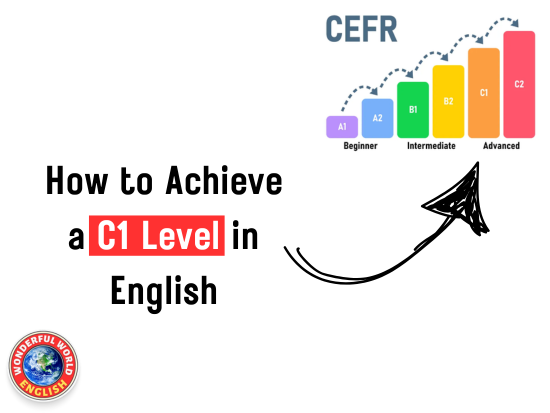Contents
Toggle
Meet David De’ Ath, founder, editor, and writer at Wonderful World English. With his extensive background as an English teacher, David provides valuable insights and practical tips on ESL for students and teachers alike.
Teaching English to adults requires an understanding of the unique challenges and motivations that come with adult learning.
Adult ESL learners bring a wealth of life experience to the classroom, which can enrich the learning environment and require a different approach than teaching younger students.
Educators must be cognizant of the varied reasons adults may learn English, ranging from career advancement to personal improvement.
Ensuring lessons are relevant and directly applicable to real-world situations helps maintain motivation and facilitates the practical application of new language skills.
Building confidence is a critical part of teaching ESL to adults.
Instructors must create a supportive atmosphere that acknowledges the adult learner’s existing knowledge base while encouraging the development of new language skills.
Lessons should be structured to promote steady progress, providing regular opportunities for practice and feedback.
Effective teaching techniques often include a mix of traditional and innovative methodologies designed to engage learners and cater to different learning styles.
The ultimate goal is to equip learners with the language skills needed to communicate effectively and achieve their personal and professional objectives.
Key Takeaways
- Tailoring ESL education to adult learners enhances their ability to apply English in real-world contexts.
- A supportive environment that fosters learner confidence is key to successful language acquisition.
- Regular practice with constructive feedback propels adult learners toward language proficiency.
Understanding Adult Learners
Teaching ESL to adults requires recognizing the unique goals, life experiences, and motivations they bring to the classroom.
Tailoring approaches to align with their personal and professional aspirations is crucial for effective learning.
Learning Goals and Motivation
Adult ESL learners typically have clear, practical learning goals related to work, life, or both.
They may seek to improve their language skills to advance in their careers, secure jobs, or facilitate everyday communication in English-speaking countries.
Motivation often stems from immediate personal needs, such as conversing with colleagues, navigating public services, or supporting their children’s education.
Life Experience and Learning Style
Adult learners bring a wealth of life experiences that influence their learning styles.
They often prefer the direct application of language learning to real-life situations.
Instructors should consider these experiences an asset and integrate them into teaching methods.
For example, role-playing job interviews for those focused on work-related English use or discussing healthcare vocabulary for daily tasks.
Their experiences may also lead them to favor a self-directed approach, enjoy problem-solving activities, and seek to understand the logic behind grammar rules.

Topics for Adult English Learners
Selecting engaging and relevant topics is crucial for motivating adult ESL learners in their language learning journey.
Topics should resonate with their personal interests, professional needs, and everyday life situations.
Below is a table of suggested topics and activities designed to inspire educators and learners alike:
| Topic | Description | Suggested Activities |
|---|---|---|
| Workplace Communication | Focus on language used in professional settings, including meetings, presentations, and emails. | Role-play meetings, writing professional emails, practicing presentations. |
| Everyday Conversations | Language for daily interactions such as shopping, dining, and socializing. | Role-play meetings, writing professional emails, and practicing presentations. |
| Travel and Tourism | Language for traveling, booking accommodations, and navigating airports and public transport. | Dialogue practice, role-playing scenarios, and creating shopping lists. |
| Health and Wellness | Vocabulary and phrases related to medical appointments, fitness, and healthy living. | Simulated travel planning, reading travel brochures, and making reservations. |
| Parent-Teacher Communication | Language skills for engaging with teachers, understanding school communications, and supporting children’s education. | Discussing health topics, role-playing doctor visits, and creating fitness plans. |
| Current Events | Discussing news, global events, and societal issues to enhance comprehension and critical thinking. | Reading and summarizing news articles, debating current issues, group discussions. |
| Technology and Digital Literacy | Vocabulary and skills for using computers, smartphones, and the internet effectively. | Reading and summarizing news articles, debating current issues, and group discussions. |
| Cultural Exchange | Exploring cultural differences, traditions, and etiquette in English-speaking countries. | Navigating websites, creating digital presentations, and practicing online safety. |
| Financial Literacy | Language related to banking, budgeting, and financial planning. | Sharing cultural stories, comparing traditions, and role-playing social interactions. |
| Legal and Civic Engagement | Understanding legal terms, civic duties, and participating in community activities. | Creating budgets, discussing financial goals, and understanding bank statements. |
Essentials of Lesson Planning
Effective ESL lesson planning involves meticulously structuring lessons and integrating key skills to meet the diverse needs of adult learners.
Lessons should be tailored to the students’ proficiency levels and encompass the core areas of language acquisition: speaking, listening, grammar, and vocabulary.
Structuring the Lesson Plan
A well-structured ESL lesson plan starts with clear, concise objectives achievable within the class timeframe.
A typical structure includes:
- Warm-Up (5-10 mins): Activities to ease students into the learning environment.
- Introduction (10-15 mins): Presentation of new concepts or skills.
- Practice (15-20 mins): Guided practice using the target language or skill.
- Production (20-30 mins): Activities where students use the language more freely and creatively.
- Review (5-10 mins): Recapping key points and clarifying doubts.
This structure balances teacher-led instruction and student interaction, gradually building skills and concepts.
Integration of Key Skills
A successful ESL lesson plan for adults should integrate the four key language skills:
- Speaking: Activities that prompt students to speak using real-life scenarios.
- Listening: Authentic listening tasks where students discern context, nuance, and details.
- Grammar: Introduce grammatical structures in context, with ample practice.
- Vocabulary: Incorporate new vocabulary in thematic units, encouraging recognition and use.
Integrating these skills into each lesson supports a well-rounded learning experience, aiding learners in achieving greater fluency and comprehension in English.
Related: How to Improve Vocabulary in 30 Days: Ultimate Guide

Effective Teaching Techniques
Effective teaching techniques for ESL adults focus on practical application through interactive methods and learner-centered activities.
These approaches help students use English confidently in real-life contexts.
Interactive and Engaging Activities
Interactive activities keep the learning process exciting and relevant.
Role-play exercises allow students to practice conversational English in various scenarios, building fluency and confidence.
Incorporating games tailored to language learning can also be effective.
Examples include:
- Bingo: Focusing on vocabulary or grammar.
- Charades: Acting out phrases or vocabulary for others to guess.
- Debates: Encouraging learners to articulate opinions clearly and practice persuasive language skills.
Using Real-World Contexts
Contextualized lessons drawing on real-world contexts are meaningful for adult students.
Teachers should integrate authentic materials such as menus, articles, or interviews.
Approaches include:
- Task-Based Learning: Learners complete tasks mimicking real-life situations, like making reservations or navigating job interviews.
- Communicative Language Teaching (CLT): Focuses on enabling effective communication through interactive speaking and listening exercises relevant to daily activities.
Both methods emphasize the practical use of English in everyday communication, which is beneficial for adult learners integrating the language into their lives.

Language Skills Focus
Developing core language skills through targeted activities is crucial for effective communication and participation in an English-speaking environment.
Speaking and Pronunciation
Speaking is a key component of language learning.
Adults should practice through structured activities like role-playing real-life scenarios, gaining confidence and fluency.
Pronunciation exercises should focus on the distinct sounds of English, aiding learners in minimizing accents.
For example:
- Pair Work: Scripted dialogues to practice intonation.
- Tongue-Twisters: Mastering difficult phonetic sounds.
Listening and Comprehension
Enhancing listening abilities is essential for understanding spoken English.
Adults benefit from exercises like listening to recorded dialogues or podcasts relevant to their interests or professional fields.
To test and improve comprehension, instructors can use:
- Fill-in-the-Blanks: Based on audio clips.
- Group Discussions: Interpreting and debating content from listening activities.
Reading and Vocabulary Expansion
Expanding vocabulary is inseparably linked with reading.
Adults should engage with texts like news articles and short stories to enrich their word bank and expose them to different writing styles and contexts.
Strategies include:
- Personal Vocabulary Lists: From reading materials.
- Skimming and Scanning Practices: Improving speedy comprehension of texts.
Related: Does Reading Expand Your Vocabulary? The Truth
Assessment and Feedback
Effective assessment and feedback strategies support adult ESL students in their language learning journey, enabling educators to monitor progress and provide targeted, motivating feedback.
Monitoring Progress
Assessments should be regular and varied, from formal exams to informal observations, to gauge language proficiency accurately.
Regular assessments track progress and indicate readiness for higher-level language learning.
Providing Constructive Feedback
Constructive feedback highlights areas of improvement and acknowledges successful language use.
The Sandwich Technique, starting and ending with positive comments and suggestions in the middle, is effective.
Feedback should be specific, actionable, and linked to learning objectives, empowering students to take an active role in their educational journey.

Conclusion
Understanding the unique needs and characteristics of adult ESL learners is essential for creating effective and engaging educational experiences.
By recognizing their distinct learning goals, life experiences, and preferred learning styles, educators can tailor their teaching methods to align with adult learners’ personal and professional aspirations.
Structuring lessons with clear objectives, integrating key language skills, and employing interactive and real-world activities are crucial strategies for fostering a dynamic and practical learning environment.
Effective assessment and feedback further support adult learners, enabling them to track their progress and receive constructive guidance.
By adopting these tailored approaches, educators can help adult ESL learners achieve greater fluency and confidence in their English language skills, ultimately empowering them to succeed in both their personal and professional lives.
The journey of learning a new language is challenging, but with the right strategies and support, adult learners can reach their goals and fully integrate into English-speaking environments.
We hope you find value in this information; you can contact us if you are in need of any assistance.
Have a wonderful day!
Image Attribution: All images licensed via canva.com






